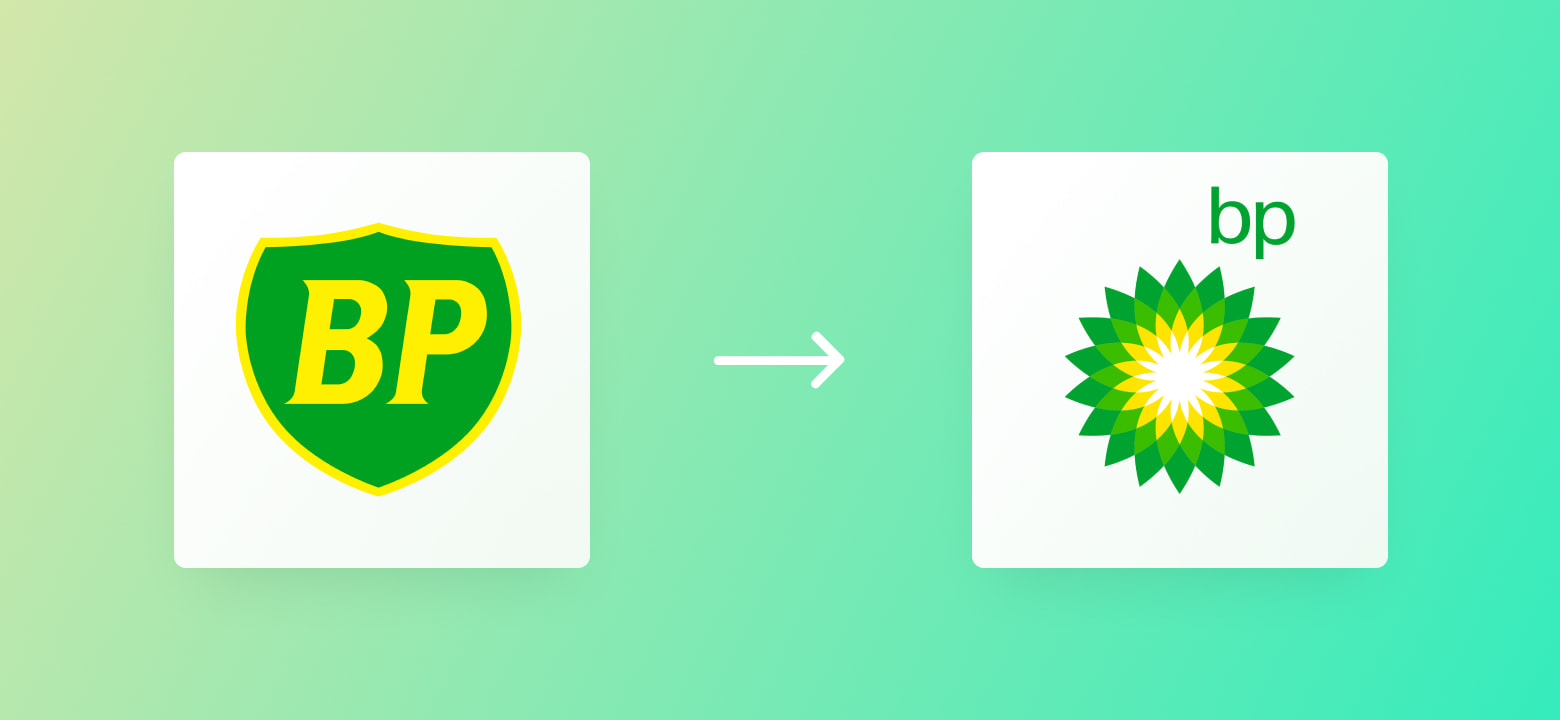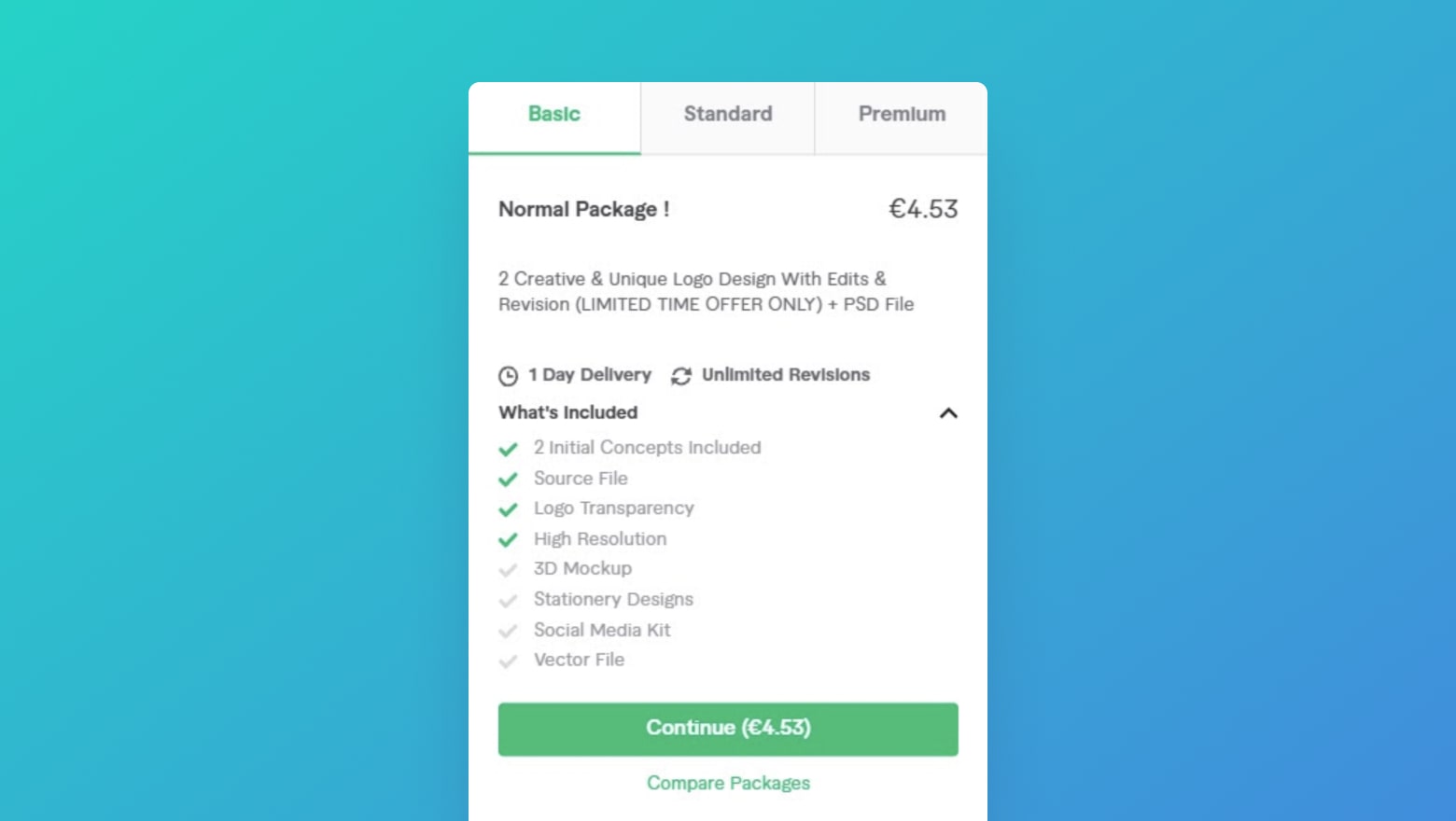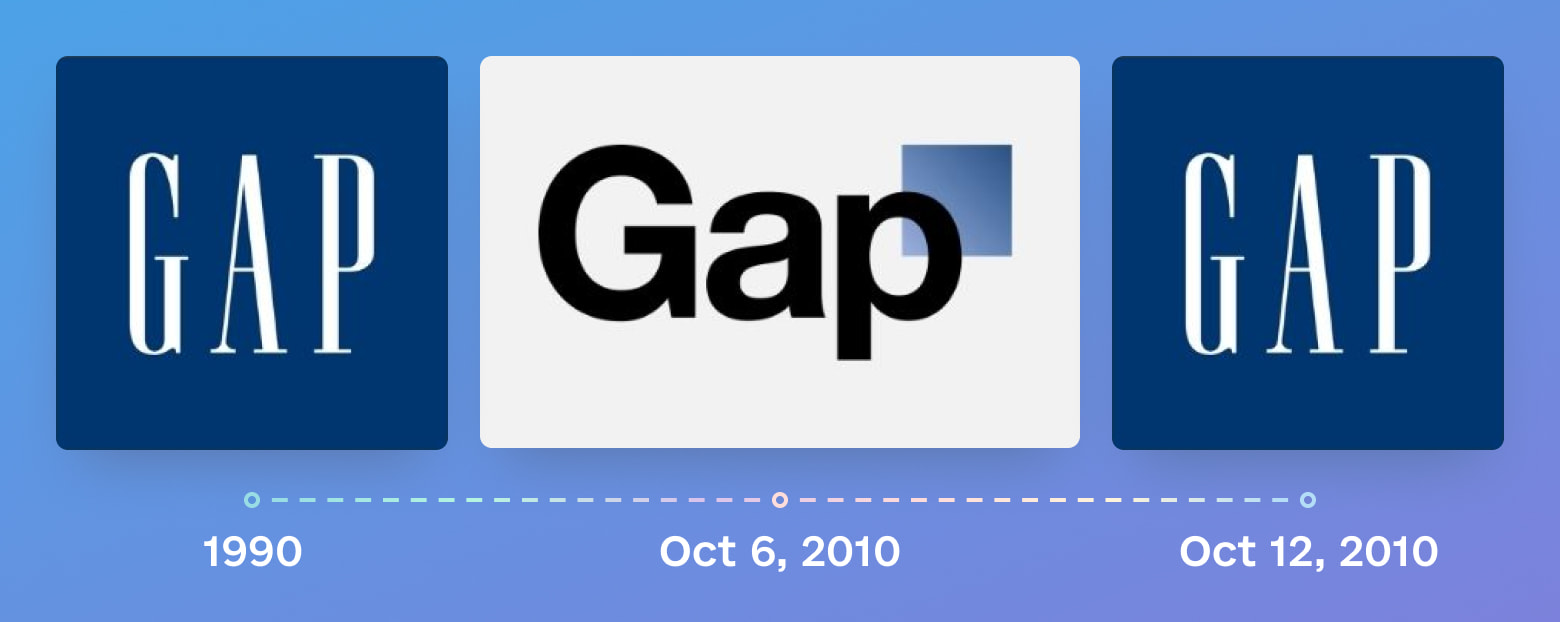HIRE LOGO DESIGNER
What do Coco Chanel and a medieval farmer have in common? A logo.
Yes, a logo is what 13th-century business owners used to put on their cattle. The same way Coco Chanel used interlaced letters of her name on a perfume bottle.
Farmers could differentiate their products from those of competitors by using logos. Chanel got a symbol that brought her timelessness and fame. If you’re a modern business owner, you know a logo must include all these aspects to create a legacy.
This brings up huge challenges: “How can you find a logo designer that understands visual storytelling and your brand’s story and can leverage them into a longstanding legacy?” “Who is the best logo designer between two great candidates?” and more. If you struggle with such issues, this article will be your solution.

Why are logos so important?
Michael Bierut, who designed the logo for Hillary Clinton’s 2016 presidential campaign, said: “Logos work the same way as religious symbols. There’s nothing inherent in shapes, but it’s what these shapes represent in the minds of the people who are looking at them.”
In other words, a logo isn’t just a nice picture you put on your website. It’s a powerful symbol that embodies your business and its principles. And here are the three ways a logo can enhance these principles:
1. Recognition
Now, let’s see how it works in real life. What do you think when you hear the word Adidas? Do you think of three black stripes on white sneakers? Or imagine a celebrity athlete running in these sneakers or jumping to score a winning point? Maybe you think of a storefront with many different Adidas sneakers for sale. Whichever way it works for you, your associations with a brand are visual.
When you see the three stripes, you immediately associate them with the brand and, therefore, with the visual imagery you think of when you think of the brand.
Email Audience conducted research in 2019 that states an image is processed from 6 to 600 times faster than a word. Thus, processing a single image takes 13-150 milliseconds compared to 3.75-7.5 seconds per sentence.
In other words, you’ll quickly recognize a brand through imagery rather than by fully reading the name. This also works for brands like Coca-Cola and Pepsi.
2. Competitiveness
When a new company is created, it doesn’t mean just another business. From an entrepreneur’s point of view, it’s one more rival in the competition for people’s attention. For a consumer, however, it means one more point in the long list of options.
So how can a person choose your company if there’s already plenty of such? Of course, we must think of services and value propositions, but a memorable logo is another crucial aspect. A distinct logo will make your company stand out in the market. For instance, if you choose an easily recognizable logo color and stay consistent with your image on various platforms, you can improve your brand recognition by up to 80%.
3. Loyalty
A logo is as much about loyalty as it is about affiliating with a brand and its principles. For instance, why do some people put Apple stickers on devices of other brands? Because they want to be part of something bigger than this brand stands for.
The same goes for Starbucks. When someone chooses a plastic cup with a green mermaid, they don’t just do it for the coffee inside. The same drink is sold in almost any other coffee place on that street.
What people buy alongside Starbucks coffee is the image it carries. Are they a dynamic trailblazer who enjoys the good moments of life and a nice cup of coffee to accompany them? The perceived value a great logo can bring to a company is almost impossible to measure.
How much does it cost to make a beautiful logo?
You must have heard of cheap logos that brought brands worldwide fame and expensive logos that caused significant backlash. For instance, the Nike logo cost $35 and has been on the market since 1971. This simple yet elegant design has turned Nike into a genuinely iconic brand recognized worldwide.

On the other hand, there are cases like British Petroleum’s rebranding. In 2000, the oil company changed its green shield logo to one resembling the sun. The new logo cost $211,000,000 and tried to suggest the company’s more eco-friendly approach.
However, the public didn’t support this decision as they linked British Petroleum with oil spills. This, in turn, carries the opposite message this brand attempted to share.

The question is: “What is the real price for a logo?” In reality, a professional logo designer charges way less than $211,000,000. However, there is no universal price for logo design on the market, as the range of prices varies drastically.
Why? Because numerous criteria impact the price. They include the designer’s experience, skills, country of residence, and type of customer request.
Considering these points, a logo design might cost from $5 to $5,000 and beyond. The same principle applies to designers who charge hourly or name the price for the whole project.
For instance, a logo costs from €4.52 to €6,800 on Fiverr. At the same time, on Upwork, designers charge one hour to create a logo, which is from $5 to $150 per hour.
Why such a wide range? Depending on your price, you might get just an illustration or a whole package. For €4.52, you may get 2 high-resolution logo concepts with their transparent variant. Depending on the designer, the delivery date might be in a day or a few weeks. The number of revisions is usually limited to 1. However, you can find better bargains, such as those below.

However, €4,070 might get you five high-resolution concepts, a transparent logo, a stationery design, a social media kit, and a vector file. A vector file is needed when the logo size changes.
Such a format allows it to be enlarged infinite times without losing the quality. Moreover, a logo designer might include your brand’s typography, strategy, icons, and patterns in their package.

On the other hand, you might look for a logo designer on Upwork. Unlike Fiverr, this website’s interface doesn’t include a segment that lists what the designer offers for a particular price. All the information you can find is listed in the designer’s description box.
-min.jpg)
The designers that charge more usually include a detailed scope of their services. Although, it’s still not as precise as at Fiverr. More information can be clarified in private conversations with the designer, meaning you must spend more time on that. Besides, as more details appear, the price might increase, too.
-min.jpg)
In other words, hiring a logo designer is like looking for a particular needle in a pile of needles. A lot of money can get you as good a design as less money would. Or the other way around.
So what should you do then? Pay a lot to try and avoid risk, or try your luck for a lower price? There’s another option for those who don’t want to play this risky game. You can choose a flat-rate service, like Awesomic. We vet designers and professionals to a high-quality standard, match them according to skill level and industry expertise, deliver updates every business day, and offer unlimited revisions.
Am I paying this much for just a picture?
Awesomic believes that a logo is more of an asset than a picture. A logo can boost your income or destroy your company’s brand. A logo designer may create a logo that you love but your customers are repulsed by. So, what should you do in this case? Of course, change the logo. If it doesn’t bring value to your company and even damages its profits, it’s not worth the risk.
Chris Do, the CEO and founder of The Futur, agrees with Awesomic’s belief. In the “Money Talk” workshop, he said, “When you buy a logo design, you don’t pay for pixels. What you acquire with this picture is the value it brings.”
That’s why business owners shouldn’t hire a logo designer only based on the price and style of their work. You need to be sure that this person will create a logo that will add value to your company. If saving money is your priority, opting for an unqualified logo designer might lead to spending hundreds of thousands more on future costs and customer acquisition efforts.
In 2010, Gap decided to change its logo, which it had been using for over 20 years. The estimated cost of the new logo was in the range of $100,000,000. However, the new logo was used for only 6 days as it received enormous backlash in the media. The brand had no choice but to go back to its previous logo, which is used to this day.

What’s the moral of this story? Value. A logo must bring positive value to your company. Therefore, the price or speed of creating a logo isn’t an exact measure of assessing its quality. The main thing is how accurately the logo reflects your brand’s concept and values.
An excellent example of this is Facebook’s rebranding into Meta. As its founder, Mark Zuckerberg, suggested, this action was needed as Facebook’s identity changed. The values of a social media network changed, and, as a result, it affected its logo.
As Facebook became a metaverse company that covers numerous platforms and purposes, it needed a new logo to reflect its new values. Now, its symbol lives in motion and 3D, creating a continuous loop resembling the infinity sign. This symbolizes the infinite horizons in the company’s metaverse.
-min.jpg)
Facebook’s, or Meta’s, recent changes are a dramatic example of how a logo is the essence of a company’s brand. It plays a much more important role than just a picture—it represents what is included in it.
Behind the eye-catching image, you’ll find a whole world of brand visual storytelling concepts, senses, and values the company aims to broadcast to the world. Ask yourself: when does the company need a logo?
There are only two answers: when a logo is newly created and when an existing one needs rebranding. In both cases, a logo becomes a message to the world about this business and what it stands for.
Shannon DeJong, founder and owner of House of Who branding agency, proves this point. She believes that a logo is “a complex ecosystem. It’s internal and external and exists in the customers’ minds; it’s all of these things rolled into one essence.”
So, what do you think: are you really paying for “just a picture”?
Why hire a logo designer when there are other options?
A logo designer has the skills to mesh the intangible with the tangible. As one example of such abilities, we can talk about color psychology.
A Reboot study suggests that 91% of people can recognize Google only by the color scheme of its logo. Moreover, this knowledge of using color can increase purchase intent and bring out the brand’s personality.
We have a graphic designer in our company. We can use our graphic designer for a logo.
No doubt your company’s designer has the skills to create excellent illustrations for social media or websites. However, is it a good idea to hire a graphic designer for logo design? Would you hire Jackson Pollock to paint an impressionist painting? Would you put the Red Hot Chilli Peppers to play a heavy metal concert?
Every niche expert guarantees much more experience and knowledge in a particular topic. Therefore, it’s more likely that a logo designer will give you a better result in a shorter time.
And what if I simply use one of those AI logo generators? It takes 5 minutes, and it’s free.
Let’s put this into perspective: a few-minute process can give you up to a dozen logo designs. However, the fact that it’s free explains its value. Remember: if a logo costs four dollars, it’ll most likely bring value equivalent to those four dollars. And if it’s free…?
Another thing: when you use such services, your company’s research consists of choosing your industry, typing in three keywords, and choosing the font. Is that a thorough analysis of the market and customer base and how your company fits within the market with its values?
Moreover, what you get as a logo on such websites is a stock illustration with some text under it. If you want an exceptional and memorable logo, hire a designer, not AI.
How to find top-class logo designers for hire?
As you realize, a valuable logo requires more than just a nice picture, which raises another concern: where should you look for an expert to create it? Even though the Internet is swarming with logo designers, hiring a good one is a tough task.
Yes, you can find potential candidates almost everywhere, as they use all the possible platforms to attract customers, including posting funny videos on TikTok. However, how sure can you be that this is a professional logo designer that is a good fit for you and your company?
That’s why looking for an expert on the sites created for this purpose is more reasonable. Here are three of the most popular and time-tested variants. But as with everything else, each has its pros and cons.
Freelance sites
These platforms have many logo designers for hire online and are highly popular among freelance workers. For example, as of October 2021, there were more than 55 million users on Freelancer. A simple algorithm causes such popularity: employees can post vacancies or contact the user.
✅ Advantages
Detailed and accurate request. On these platforms, you can thoroughly search for the logo designer you need. You can choose between location, language, expertise, and price options. Even after applying multiple options, the candidate pool is still numerous.
Two-in-one solution. Besides looking for an employee, you can post a job offer with your logo request. This option would benefit those who want to save time looking for a designer. Instead, the search is limited to only those interested in your offer.
❌ Disadvantages
Pig in a poke. How sure can you be that you’ll get what you want after spending your time, money, and resources? Or will the result not be a copy but the original? Your only guarantee is a bunch of reviews from some strangers. Vetting becomes a big question here.
Portfolio sites
Unlike freelance sites, this variant is more specific, presenting no other expertise areas but design. Here, you choose an expert based on their portfolios and reach out to the best candidates to discuss the price. Well-known examples are Behance, Dribble, and Coroflot.
✅ Advantages
The proper way to assess creativity. In contrast to freelance sites, this one allows you to hire a freelance designer based on their skills, not descriptions or prices. Here, you can immediately check candidates’ previous work and evaluate if they’re good enough for you.
Direct contact. If you find the logo designer who best fits your business, all you need to do is click on the “Hire me” button. This way, you could quickly start negotiating with experts and always be in touch to discuss every detail.
❌ Disadvantages
Taking risks. This format gives you zero guarantees, just like freelance websites. Will you spend weeks waiting for the logo? Will you get what you want? How do they communicate? How do they handle difficulties? There are more questions than answers.
Design subscription services
A platform like Awesomic is an affordable solution that provides a ready-to-go candidate at a flat monthly rate. Unlike the previous variants, this one does all the things you need to find a logo designer instead of you.
✅ Advantages
Recourse efficiency. In contrast to portfolio sites, there is no “surprise!” price, which you find out of the blue. Also, there is no overpricing, like on freelance sites. Here, you always know how much you pay and what results you receive after.
No stress. With the help of a design subscription service, you’ll forget about the hassle of looking for a perfect candidate that meets all your requirements—no rushing, sorting out, interviewing, or assessing. Instead, you get in touch with a reliable expert who is matched to you and can provide you with all the designs you need in the shortest possible time.
More concentration. As such, a design service relieves unnecessary hiring and management work, and you have more time to focus on other projects or tasks. Thus, looking for a perfect designer is no longer an issue for you. You can concentrate on developing different aspects of your business.
❌ Disadvantages
Not a one-time solution. If you’re looking for “just a picture,” this variant is less profitable for you financially. It’s great for those who think big and, besides the logo, would like to create a wide range of brand assets, including brand books and corporate templates.
Find the best-fit logo designer for your company
The recipe for finding a perfect logo designer is more straightforward when you know its ingredients. A logo is more than just a nice picture — it’s a combination of your company’s values, concepts, and message you’d like to convey to your customers.
Awesomic matches you to designers, developers, and product professionals who have the necessary skills and industry expertise and can offer you an exceptional experience. We iterate on outputs until they give you exactly what you need, and our customer success team is on call to help you with anything you need.
Start with Awesomic, and forget about radio silence, misleading design portfolios, and endless interviews and trial periods. We’re here to help you achieve your objectives, and our designers are ready to hit the ground running to help you achieve them.
One subscription and your hiring problems solved


FAQ

Awesomic is a revolutionary app that matches companies with vetted professionals across 30+ skill sets, from design and development to marketing and product. Based in San Francisco with a global core team, we offer a faster and more flexible alternative to traditional hiring through a subscription-based model. Awesomic delivers high-quality talent on demand, without the delays of recruiting.

We function as a subscription-based service that matches you to top-tier, vetted talent. Submit a project in just a few clicks and start receiving deliverables in as little as 24 hours. Scale your Awesomic plan up or down as your business needs change.

Every Awesomic subscription comes with unlimited revisions. You receive daily progress updates via the app, and you can provide feedback or request iterations as needed. If your project requires a different approach, you can request a talent rematch at any time, at no extra cost. You can also add teammates to collaborate and streamline feedback

A talent marketplace is a platform that utilizes data and intelligent matching algorithms to connect professionals with projects based on their skills, experience, and availability. While often used internally by large companies, Awesomic applies this model at scale, matching vetted global talent to your most critical business needs.

Hiring is time-consuming, expensive, and risky. Awesomic eliminates that problem. We rigorously vet all talent for technical ability, communication, and soft skills, ensuring only senior-level professionals work on your projects. You skip the job posts, interviews, and delays, and get straight to results.

No, Awesomic goes beyond design. While many clients utilize us for branding, UI/UX design, or motion graphics, we also provide vetted talent in no-code web development, product design, marketing, and more. Think of us as an extension of your team. A flexible, high-performing creative partner from planning to execution, whether you're building awesome products or scaling your team.

You can talk directly with your matched talent via the Awesomic app, connect via Slack, email, or schedule video calls. No matter the plan, you’ll receive daily updates in the app for every active task. You can also tag us in for any issues through our in-app customer chat.










